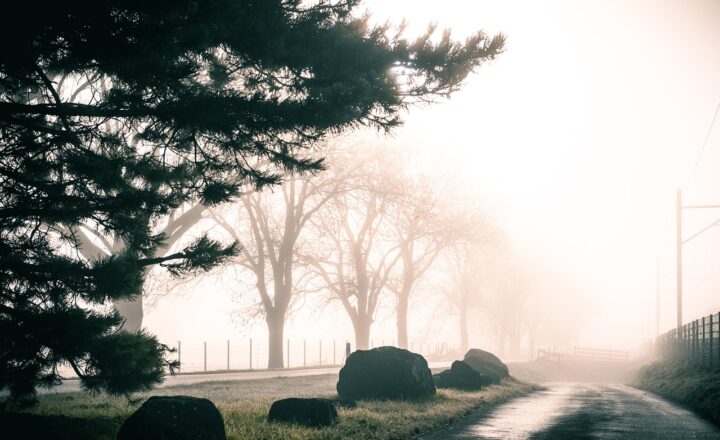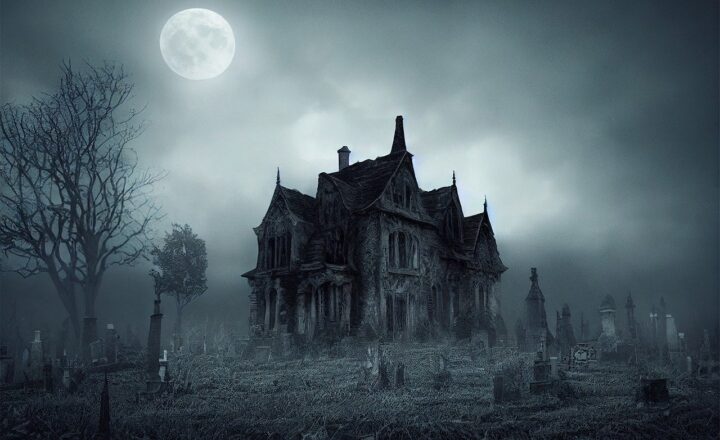The Most Terrifying True Stories That Inspired Hollywood’s Most Famous Scary Movies
November 17, 2024

Hollywood has long been fascinated by the macabre and the mysterious, and many of its most famous horror films have roots in true stories that chill the bones and awaken our primal fears. In this article, we dive deep into the horrifying real-life tales that inspired some of the most iconic scary movies in cinema history.
1. The Conjuring: The Haunting of the Perron Family
One of the biggest blockbuster horror franchises of recent years, “The Conjuring” series is based on the paranormal investigations of Ed and Lorraine Warren. The first film, released in 2013, focuses on the terror experienced by the Perron family in their Rhode Island farmhouse during the 1970s. As the haunting escalates, the family finds themselves tormented by a dark force that is linked to the house’s horrific past.
Real-life events surrounding the Perron family included encounters with spirits and poltergeist activity, which led the Warrens to investigate their claims. According to the family, they discovered that the land on which their home was built had a sinister history, including witchcraft and tragic deaths. The film captures the essence of their terror and the Warrens’ relentless battle against the supernatural.
2. The Texas Chain Saw Massacre: Ed Gein’s Gruesome Legacy
Tobe Hooper’s 1974 horror classic, “The Texas Chain Saw Massacre,” follows a group of friends who fall victim to a family of cannibals in rural Texas. The film is infamous for its disturbing imagery and raw terror, but what many may not realize is that it was inspired by the real-life crimes of Ed Gein, a notorious murderer and body snatcher from Wisconsin.
Gein’s home was filled with grotesque memorabilia made from human remains and skin, giving rise to tales of horror that would inspire many horror films, including “Psycho” and “Silence of the Lambs.” While the Texas Chainsaw Killer, Leatherface, is a fictional character, the chilling undertones of family madness and cannibalism reflect the gruesome reality of Gein’s life.
3. The Amityville Horror: A Family’s Nightmare
The infamous case of the Amityville Horror is rooted in a tragic crime that occurred in 1974 when Ronald DeFeo Jr. murdered his entire family in their home in Amityville, New York. Just a year later, the Lutz family moved into the house and claimed to experience supernatural phenomena that prompted them to flee after only 28 days.
The haunting events reported by the Lutz family formed the basis for Jay Anson’s 1977 book, “The Amityville Horror,” which was adapted into a film in 1979 and later remade several times. While skeptics question the validity of the Lutz’s claims, the chilling reports of voices, cold spots, and other paranormal activity sparked public fascination and remain a touchstone in horror pop culture.
4. Psycho: The Story of Ed Gein
Alfred Hitchcock’s groundbreaking film “Psycho” has become a hallmark of horror cinema. While fictionalized, the character of Norman Bates is influenced by the real-life Ed Gein, who was known for his horrifying practices and troubled psyche.
In “Psycho,” Norman Bates leads a double life as both a mild-mannered motel owner and a murderous figure under the influence of his deceased mother. This duality reflects the complexities of Gein, whose mother’s death played an integral role in his descent into madness. Hitchcock’s depiction of a mentally unstable character transformed the horror genre and solidified its place in cinematic history.
5. The Haunting in Connecticut: A Family’s Haunted Past
Based on the real-life experiences of the Snedeker family, “The Haunting in Connecticut” chronicles their disturbing encounters with the supernatural after moving into a former funeral home in the 1980s. The family reported frequent sightings of spirits, unexplained noises, and possessions, which made life in their new home unbearable.
While critics have debated the authenticity of the family’s claims, their story became a sensational case in paranormal circles and was adapted into a 2009 film that heightened the horror through dramatization. The eerie nature of their experiences speaks to the lingering nature of grief and fear across generations.
6. Zodiak: The Serial Killer Behind the Mystery
David Fincher’s “Zodiac” isn’t a horror film in the traditional sense, but it evokes a deep sense of dread and paranoia. Based on the true story of the Zodiac Killer, who terrorized San Francisco in the late 1960s and early 1970s, the film tells the story of a newspaper cartoonist, a pair of detectives, and the obsession with finding a killer whose true identity remains unknown.
The Zodiac Killer taunted police and the media with cryptic letters and ciphers, and his brutal crimes added an element of suspense to the already chilling tale. The film’s exploration of the psychological impact of fear and obsession resonates with audiences, making it a far-reaching exploration into true crime and fear.
7. The Girl Next Door: The Horrific Case of Sylvia Likens
“The Girl Next Door,” adapted from Jack Ketchum’s novel, portrays one of the most horrific true stories of child abuse in American history— the sadistic treatment of Sylvia Likens. In the 1960s, Sylvia, a teenager, was left in the care of a woman who, along with her children and neighborhood friends, subjected her to relentless torment and abuse, leading to her death.
The film is a harrowing reminder of the capacity for cruelty humans possess. While not a traditional horror movie, its realism and disturbing themes make it terrifying in an entirely different way, prompting audiences to confront the darker aspects of human nature.
Conclusion
The connection between horror films and true crime adds a layer of realism that heightens the fear factor and reminds us that sometimes reality is scarier than fiction. These true stories not only inspired some of Hollywood’s most famous scary movies but also serve to evoke the chilling feelings of horror and dread that linger long after the credits roll. Whether through ghostly hauntings, unspeakable crimes, or psychological unravelings, the films discussed here stand as testaments to the dark corners of our reality.
As you explore these terrifying tales and their cinematic portrayals, consider the visceral emotion they invoke and the fragile line between fiction and reality— a line that horror has always blurred and perhaps, gloriously trampled upon.








